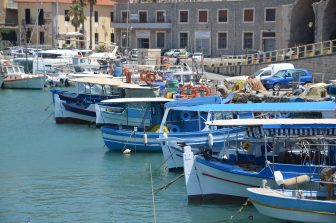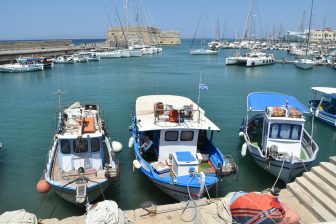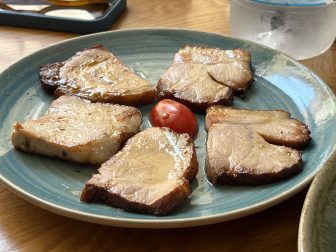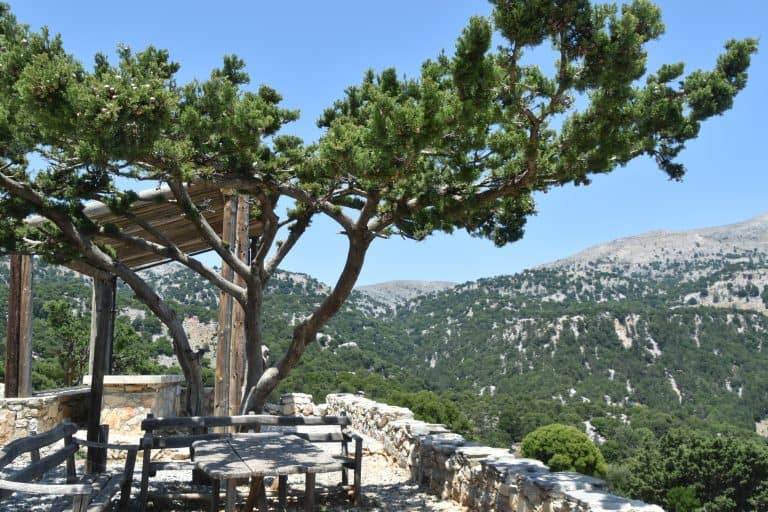
[June 2025] The purpose of the tour we took that day was to visit a village in the interior of eastern Crete, Greece.
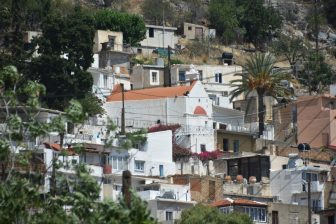
Our main destination was a village called Kritsa.
A picturesque village with rows of white houses perched on the side of a mountain called Kastellos, Kritsa has long been a centre of women’s weaving and lacemaking.
It’s located just 10 kilometres from the town of Agios Nikolaos, so it’s no surprise that it’s become popular with tourists.
As a result, the village’s main street is filled with souvenir shops and cafes.
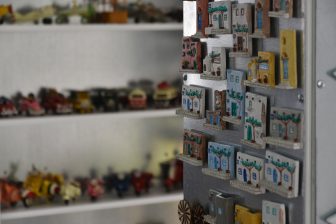
While they weren’t selling unique crafts, they were selling the same kind of things you’d find in a seaside shop.
It seems like the village has lost its distinctive Cretan inland village feel.
The older ladies from the shops were quite busy trying to attract customers.
Of course, we could see the local people, and the scenery was lovely, so we took lots of photos.
Our guide, George, took us to a workshop where they make porcelain and glassware.
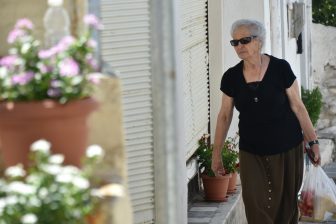
The cups they make here have an interesting mechanism: when you pour a little liquid into them, they look like normal cups, but when you fill them to the brim, the liquid spills out through a hole at the bottom.
Apparently, these cups are meant to scold greed.
They also showed us a little bit of glassmaking, but no one in our group bought anything here.
By the way, in Greece, there are bulletin boards where photos of the deceased are posted.
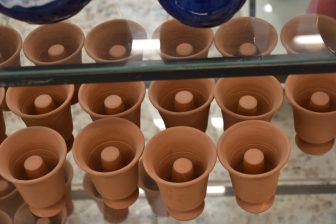
Seeing a photo on one of these bulletin boards in the village, George said, “This person is the owner of the cafe in Agios Nikolaos, where my mother works.”
Apparently, this person passed away a year ago.
The reason it’s still up there is because in Greece, ceremonies are held on the 40th day and one year anniversary of the person’s death.
In Japan, we also have memorial services for the deceased, like the 49th day and the third anniversary after the death.
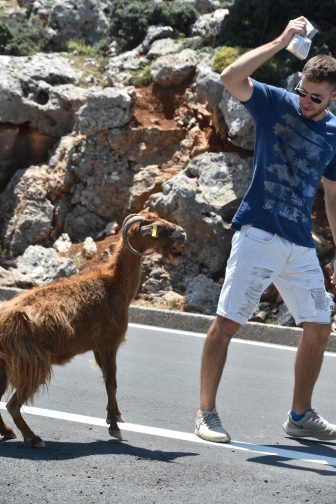
Leaving the somewhat disappointing village of Kritsa, the tour headed for the Lassithi Plateau, at an altitude of 1,150 meters.
At a great vantage point, we even had a moment to feed some corn to the goats.
Further up, we surveyed the landscape from a rocky outcrop.
There were goats here too.
George explained that goats eat the leaves and branches of young trees, preventing them from growing taller.
By the way, olive trees only grow up to an altitude of 600 metres.
From here, we could see part of the gorge.
Apparently, there are 400 gorges on Crete.
We were told that only about half of them are accessible to humans.
The air was crystal clear, creating a tranquil atmosphere.

